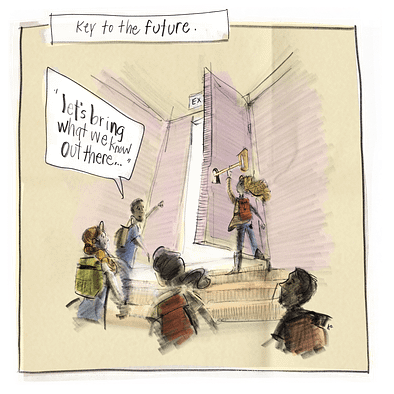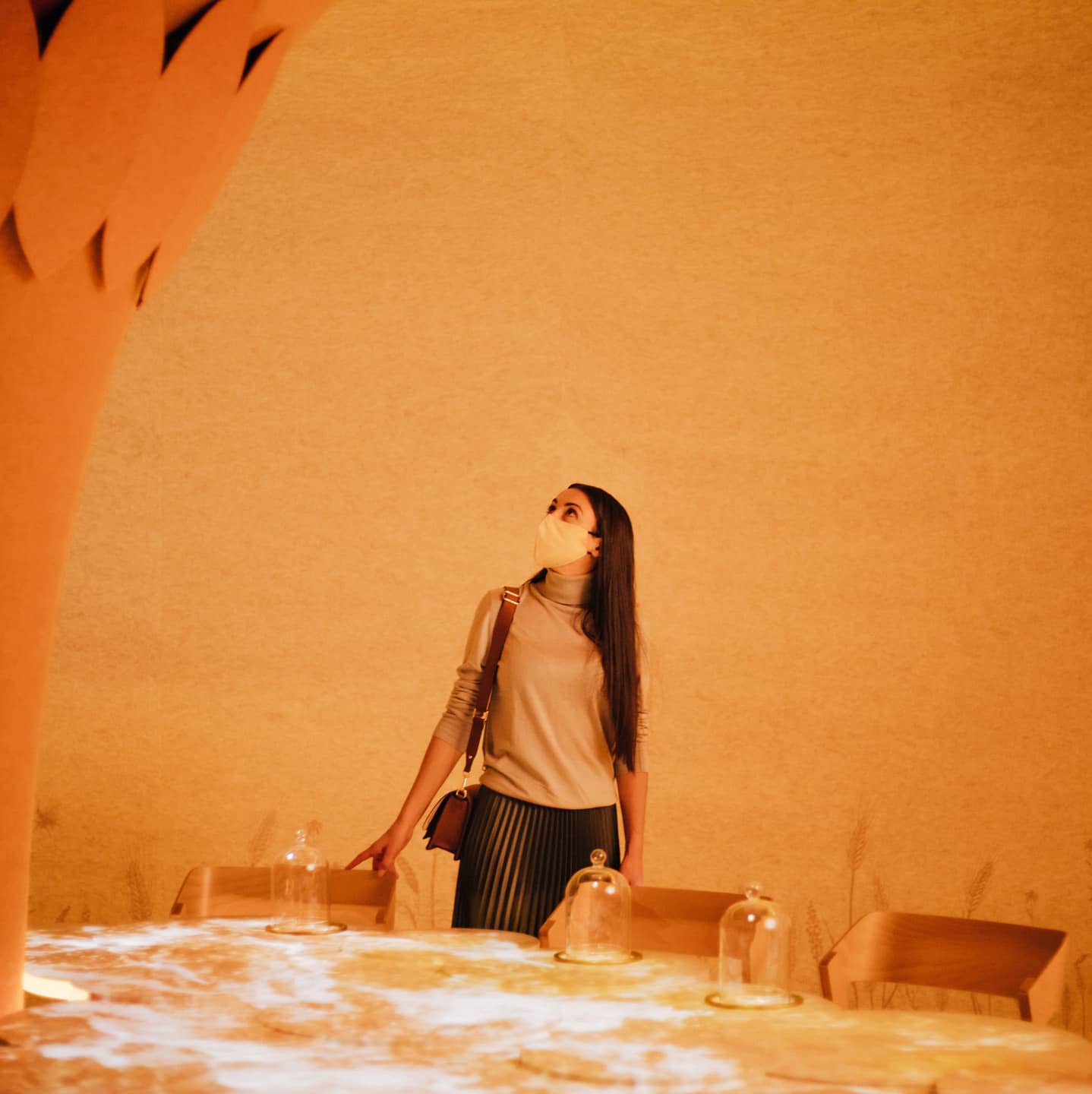- News
- The 21st Century Science Museum: Storytelling Centers for the Courageous
The 21st Century Science Museum: Storytelling Centers for the Courageous
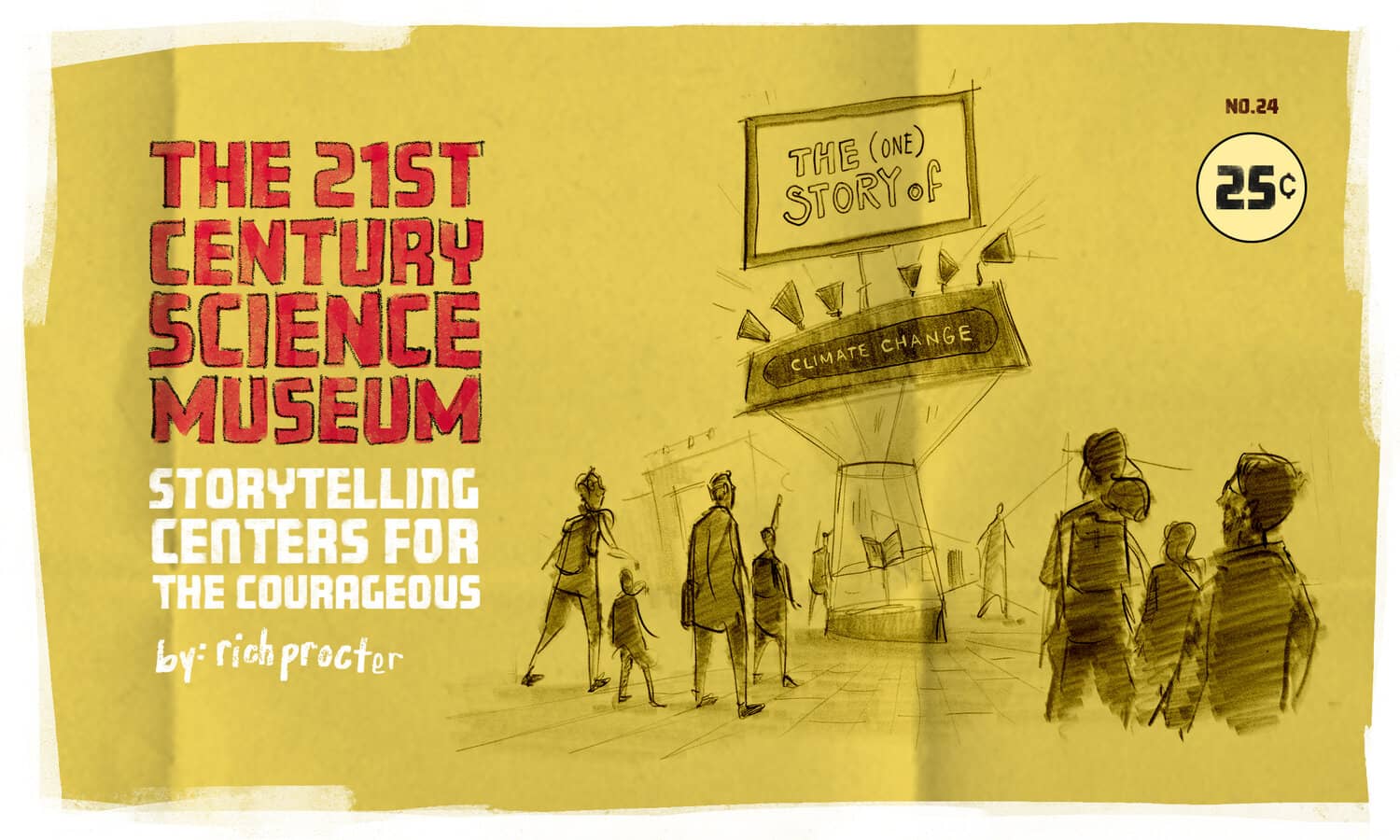
WRITTEN BY RICH PROCTER
ILLUSTRATIONS BY ALVIN OEI
OCTOBER 2020

What’s the best way for science museums to attract younger guests in an age when people have so many great ways to spend their time? As we often point out to our clients, science centers aren’t just competing against other museums and zoos for visits from this vital core audience. They’re also competing against the summer action blockbuster, new series streaming on Netflix, and billions of other Internet destinations dangling clickbait in front of their eyes.
What to do?
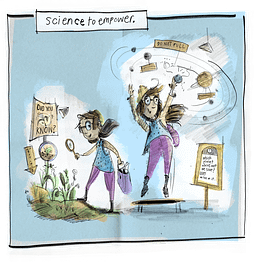
Let’s begin with the goals of science museums. In our experience, most science museums want young people to fall in love with science. They want young people to become detectives and explorers, discovering science as a thrilling way to navigate the universe. Science museums also want these guests to feel powerful: science gives young people a way to make constructive decisions about everything from what kind of food to eat to how to dispose of a plastic bag. Most importantly, they want these guests to leave feeling hopeful and optimistic about the future.
What’s the best way to meet these goals?
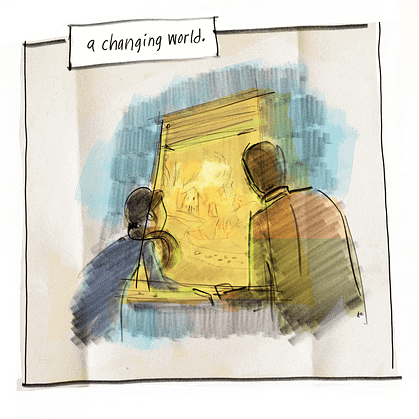
One way is for science museums to become storytelling centers dedicated to engaging the reality of climate change. The world is waking up to the existential threat of global warming. This is a crisis that affects everyone. Young visitors to these science museums will likely spend the rest of their lives dealing with the consequences of a warming planet. If we – that is all of us – are going to defeat this threat, we will need places to come together and start telling ourselves a more empowering story, one that inspires action. Science museums are the perfect places for this to happen.
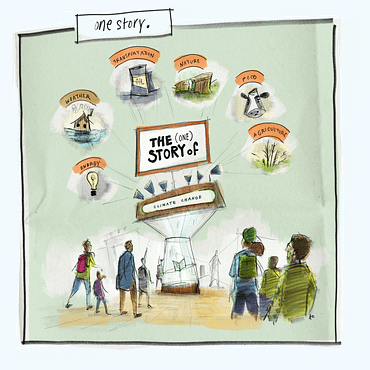
Why science museums? First of all, science museums bring together just about every aspect of human life impacted by climate change. Energy, weather, transportation, nature, food, agriculture: each of these areas is affected by climate change, and each affects all the others. In other words, all of these stories are really one story. Imagine the power of integrating all these subjects in a new, more relevant and energizing way that gives us the courage to do what must be done to thrive the rest of this century and beyond.
Courage. That’s the emotional souvenir at the end of a journey through this new kind of science museum. In 2018, NASA climate scientist Kate Marvel told us that this moment demands courage more than hope. Hope provides comfort during uncomfortable times. Courage demands that we take action and confront the world as it is. Marvel said, “The world we once knew is never coming back. Courage is the resolve to do well without the assurance of a happy ending.”
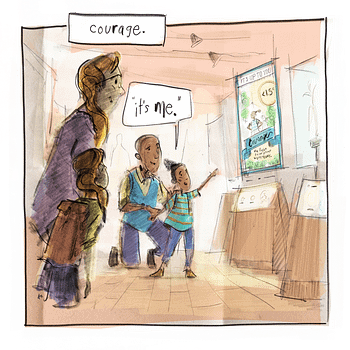
Science museums have the opportunity to celebrate young guests as the heroes of this quest to heal planet earth. They’ll learn that they are living beings inhabiting living earth in a living universe and that they hold the keys to a brighter future in their hands. They are part of creation’s most daring experiment in reflective consciousness, fully able to change course to create an interconnected, inclusive, regenerative global society that will serve their children and grandchildren. If they study science and take positive action, they will earn the gratitude of living beings hundreds of years from now for saving the earth as a habitable planet.
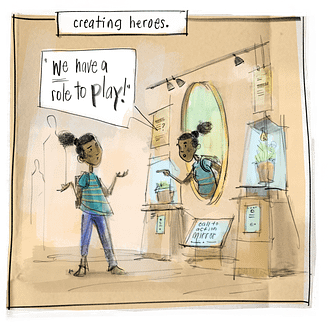
Transforming young guests into engaged heroes in the quest to mitigate global warming can be a winning strategy for all parties involved: the science center, their guests, their communities, and humanity at large. Not only does this new approach engage every subject science museums currently favor. By weaving them together into a single narrative, it also meets these young guests where they are. This new kind of science center provides a realistic platform for them to seize their own destiny and create positive change.
Ultimately, the first step to creating the change we need is to envision that it’s possible. The second step is to invite guests to step inside that vision and to turn that possibility into reality.
